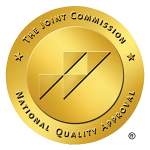Do you enjoy a drink or two?
It’s important to know that alcohol increases your risk of developing cancer in the long run. Understanding the mechanisms behind this connection is crucial to minimize your chances of developing alcohol-induced cancer.
In this article, we will explore the types of cancer linked to alcohol consumption and how long-term alcohol use can contribute to cancer development. Stay informed and learn how to reduce your alcohol-related cancer risk.
Alcohol and Increased Cancer Risk
If you regularly consume alcohol, you may be increasing your long-term risk of developing cancer. Alcohol has been linked to various types of cancer, including liver cancer and breast cancer.
The consumption of alcohol can lead to liver damage, which in turn increases the risk of developing liver cancer. The liver plays a crucial role in filtering toxins from the body, including alcohol. When alcohol is consumed in excessive amounts, it can cause inflammation and scarring of the liver, known as cirrhosis. This chronic liver damage can eventually progress to liver cancer.
In addition to liver cancer, alcohol consumption has also been associated with an increased risk of breast cancer. The exact mechanisms underlying this relationship aren’t fully understood, but it’s believed that alcohol may increase the levels of certain hormones, such as estrogen, which can promote the growth of breast cancer cells. Furthermore, alcohol may also impair the body’s ability to break down and eliminate harmful substances, allowing them to accumulate and potentially lead to DNA damage and the development of cancer.
To reduce your risk of developing cancer, it’s advisable to limit your alcohol consumption or avoid it altogether. It’s important to note that the risk associated with alcohol consumption is dose-dependent, meaning that the more alcohol you consume, the higher your risk may be. By making informed choices about alcohol consumption, you can help protect yourself against the long-term risk of developing cancer.
Mechanisms of Alcohol-Induced Cancer
Alcohol increases the risk of developing cancer long-term through various mechanisms. One of the key mechanisms is alcohol metabolism. When you consume alcohol, it’s metabolized in your body by a group of enzymes called alcohol dehydrogenases. This process converts alcohol into acetaldehyde, a toxic substance that can damage DNA. Acetaldehyde can directly bind to DNA, forming adducts, which can disrupt the normal structure and function of DNA. This can lead to mutations and genetic alterations that can ultimately contribute to the development of cancer.
In addition to DNA damage, alcohol can also affect other cellular processes involved in cancer development. For example, alcohol can impair the body’s ability to repair DNA damage by inhibiting DNA repair enzymes. This can further increase the risk of genetic mutations and the progression of cancer.
Furthermore, alcohol can stimulate the production of reactive oxygen species (ROS) in the body. ROS are highly reactive molecules that can cause oxidative stress, leading to damage to cellular components, including DNA. This oxidative stress can also contribute to the development of cancer.
Types of Cancer Linked to Alcohol Consumption
Which types of cancer are linked to alcohol consumption?
Alcohol consumption has been found to increase the risk of several types of cancer, including breast cancer and liver cancer. Numerous studies have established a clear association between alcohol consumption and an increased risk of breast cancer in women. The risk appears to be dose-dependent, meaning that the more alcohol a woman consumes, the higher her risk of developing breast cancer. The mechanism behind this link isn’t fully understood, but it may be related to the way alcohol is metabolized in the body and its impact on hormone levels.
Liver cancer is another type of cancer strongly associated with alcohol consumption. Chronic alcohol consumption can lead to liver damage, including inflammation, fibrosis, and cirrhosis. These conditions increase the risk of developing liver cancer. Additionally, alcohol metabolism produces acetaldehyde, a toxic substance that can damage DNA and promote the development of cancer cells in the liver. Other factors, such as coexisting viral infections like hepatitis B or C, can further increase the risk of liver cancer in individuals who consume alcohol.
Long-Term Alcohol Use and Cancer Development
When you consume alcohol over a long period of time, it can significantly increase your risk of developing cancer. One of the key organs that can be affected by long-term alcohol use is the liver. Alcohol is metabolized by the liver, and when consumed in excess, it can lead to liver damage. Chronic alcohol consumption can cause inflammation, scarring, and even cirrhosis of the liver, increasing the risk of liver cancer.
In addition to liver cancer, long-term alcohol use has also been linked to an increased risk of breast cancer. Research has shown that there’s a clear association between alcohol consumption and breast cancer development. The exact mechanisms behind this link aren’t fully understood, but it’s believed that alcohol may increase estrogen levels in the body, which can promote the growth of breast cancer cells.
It is important to note that the risk of developing cancer is influenced by various factors, including the amount and duration of alcohol consumption, genetic predisposition, and overall lifestyle choices. However, reducing alcohol intake or abstaining from alcohol altogether can help lower the risk of developing alcohol-related cancers, including liver and breast cancer.
Minimizing Alcohol-Related Cancer Risk
To minimize your risk of alcohol-related cancer, it’s important to make conscious choices to reduce or eliminate your alcohol consumption. Here are four strategies you can implement to prevent alcohol-related cancers by reducing your alcohol consumption:
- Set limits: Establish a clear plan for how much and how often you’ll drink. Stick to moderate drinking guidelines, which recommend no more than one drink per day for women and two drinks per day for men. It’s important to note that even moderate alcohol consumption can still increase cancer risk, so reducing intake further can be beneficial.
- Choose alcohol-free days: Designate specific days of the week where you abstain from alcohol completely. This approach helps to break the habit of regular drinking and gives your body time to recover.
- Find alternatives: Explore non-alcoholic alternatives to your favorite alcoholic beverages. There are numerous options available, such as alcohol-free beer, mocktails, and flavored sparkling water. These alternatives can help satisfy cravings while reducing your alcohol intake.
- Seek support: If you find it challenging to reduce or eliminate your alcohol consumption on your own, consider seeking support. Joining support groups or speaking with a healthcare professional can provide guidance, motivation, and accountability on your journey to reducing alcohol-related cancer risk.
- Overcoming Emotional Intimacy Challenges With Alcohol Misuse - November 18, 2023
- Overcoming Alcohol's Impact on Emotional Intimacy: 13 Essential Tips - November 18, 2023
- 6 Ways to Overcome Emotional Intimacy Challenges With Alcohol - November 18, 2023








